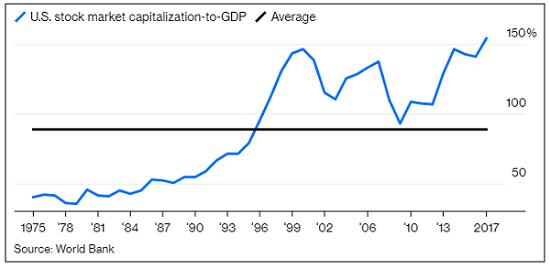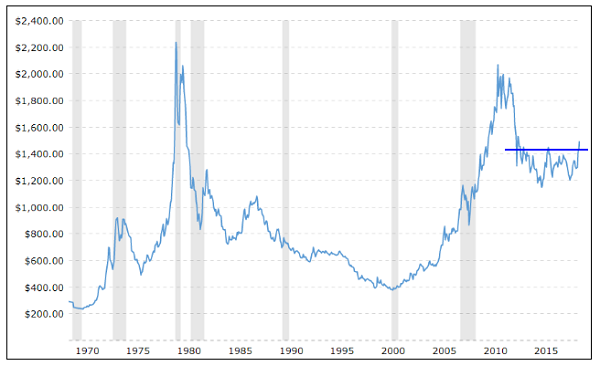The two main jobs of a retirement portfolio are protecting wealth and growing wealth. While both jobs are important, the first is more important than the second. A sudden bout of wealth destruction is a real danger for retirement portfolios.
To that end, it makes sense to think about bubble assets and anti-bubble assets in a portfolio. Most investors have a general sense of what a “bubble” is, but few have a useful definition that can apply to specific holdings. Even fewer investors know about the “anti-bubble” concept.
We can look at what two prominent asset managers, Rob Arnott and Diego Parrilla, have to say about bubble and anti-bubble assets, and show how the concept applies to building safer portfolios.
To summarize, Arnott and his team at Research Affiliates say a bubble asset has two characteristics:
- Little to no chance of a positive return based on current valuation and expected cash flows.
- A buying rationale that ignores valuation, e.g. a focus on selling to someone at a higher price.
The bubble mentality is this: A willingness to buy something at a valuation that doesn’t make sense, relative to the stream of cash flows attached to it. Whether an actual brick-and-mortar business or a stock investment, the concept works the same way. It’s possible to pay too much based on reasonable future scenarios.
Some observers worry that, at current valuations relative to cash flows, the entire stock market falls into the “bubble” category, meaning investors are paying too much generally (in valuation terms) for the stream of cash flows (earnings) they are signing up to receive.
You can see the pessimists’ point by looking at the historically elevated level of Warren Buffett’s favorite metric, the ratio of stock market capitalization to GDP, as shown in the Bloomberg chart below.
 |
Diego Parrilla, a managing partner at Quadriga Asset Managers, argues that bubbles and anti-bubbles are often mirror images of each other. This is because the same forces that inflate a bubble asset can wind up holding down the value of an anti-bubble asset at the same time. When those forces dissipate, the situation reverses: The bubble asset declines and the anti-bubble asset rises.
Whereas a bubble asset has little to no chance of delivering a reasonable return on cash flows because the purchase price valuation is too high, an anti-bubble asset has the opposite profile.
With anti-bubble assets, the valuation is so low, or so underpriced relative to current conditions, that it is extremely likely, if not almost certain, to see a positive return on investment down the road.
Parrilla calls anti-bubble assets “artificially cheap,” in the sense that their values are depressed by the same forces temporarily inflating bubble assets. His prime example of this relationship today is the comparison of high valuations on the S&P 500 to extremely low readings in the VIX, a popular measure of stock market volatility.
In Parrilla’s view, the VIX is an anti-bubble asset (to the extent you can invest in volatility as an asset class, or buy assets that increase in value when volatility rises).
There is a connection between “bubble” and “anti-bubble” here because, if stock valuations fall sharply, volatility is likely to rise at the same time.
This is exactly what we’ve seen in the past. You can see it in the long-term chart of the CBOE Volatility Index (via MarketWatch as shown below).
 |
The VIX rises when volatility is high and falls when volatility is low. It also tends to move inversely to the stock market.
In July 2017, the VIX hit an all-time low, falling below 10 for the first time. When the VIX approached this territory in 2006, it was a sign that complacency was soaring. The quant meltdown, Bear Stearns implosion, and 2008 global financial crisis all followed that 2006 low.
When dealing with bubble assets, it is typically impossible to know in advance when the bubble will burst. Bubble conditions can sometimes persist for years on end.
This is why it makes sense to monitor rather than predict — to pay attention to what is happening and adjust the portfolio accordingly in real time, rather than trying to forecast aggressively in advance.
In this regard, anti-bubble assets are a kind of portfolio insurance. That is because anti-bubble assets are likely to rise under the same conditions that cause bubble assets to fall.
Gold is a classic example of this. If bubble assets come under pressure due to recession fears, and central banks start rolling out big guns in terms of stimulus, overvalued stock markets could head into downtrends while gold and gold stocks see price appreciation on a safe haven and currency debasement basis.
It’s notable that, while many bubble assets have entered extreme uptrends these past few years, gold has spent the past five recovering from a sharp decline in price.
From 2014 onward, the gold price had mostly been consolidating in a range between $1,200 and $1,400, but recently broke out of that range as the Macrotrends chart shows below.
 |
Investors can feel challenged by bubble-like market conditions because of the acronym known as TINA, which stands for “There Is No Alternative.”
With valuations sky high — and Warren Buffett himself building up a historic mountain of cash — a great many asset managers take a TINA attitude to their equity holdings, effectively shrugging their shoulders and saying, “What else am I going to do?”
One possible answer, besides staying vigilant, is to allocate a portion of the retirement portfolio to “anti-bubble” assets — like gold and low-cost volatility plays as mentioned — which are undervalued relative to their future prospects, and could do well when market conditions change.
In a market environment as extreme as this one, where general levels of uncertainty are higher than they’ve been in years, it also makes sense to monitor all the positions in a portfolio even more closely.
Richly valued assets could deliver more upside if the United States avoids a recession, for example, but if the tide turns and it really appears we are headed for one, potentially overvalued assets could be a danger. Anti-bubble assets will be prized if a recession hits.
And rather than try to “read the tea leaves” of twists and turns in the news, the process of monitoring and pruning a portfolio can be made easier with algorithms and pre-programmed alerts (via easy-to-use investment software like TradeStops).





